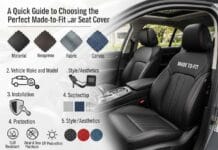Temporary rumble strips are an increasingly popular road-safety tool used in changing traffic environments. They are designed to alert drivers to upcoming hazards or changes in road configuration, using tactile and audible cues when a vehicle passes over them. Unlike permanent rumble strips milled into the pavement, these are removable, reusable, and flexible in deployment.
In this post we will explore what temporary rumble strips are, why they matter, how they are used, what design and operational challenges exist, and what future trends may shape their adoption.
What Are Temporary Rumble Strips?
A temporary rumble strip is a modular road safety device laid across a lane (or multiple lanes) to create vibration and noise when a vehicle drives over it. The effect is similar to speed bumps, but temporary rumble strips are typically lower in height, more gradual, and intended to provide an advance warning rather than force a full stop.
Because they are portable and non-permanent, temporary rumble strips can be installed, removed, or repositioned with relative ease. They often do not require drilling, adhesives, or major modifications to the pavement, making them suitable for short-term or interim traffic control needs.
These strips serve as both a physical and auditory warning to drivers: as wheels pass over the strip, vibrations are transmitted through the vehicle, and a rumbling noise is generated. The driver instinctively pays attention, slows down, or adjusts driving behavior in response.
Why Use Temporary Rumble Strips?
Enhancing Safety in Dynamic Zones
Construction sites, road maintenance zones, temporary diversions, emergency closures, and high-traffic event setups are all settings in which roadway conditions may shift day by day. In such environments, drivers may not expect sudden changes — lane shifts, reduced widths, sharp turns, or closed segments. Temporary rumble strips provide a consistent, unmistakable signal that the road ahead is different.
They help reduce collisions, improve driver alertness, and act as a backup to signage, cones, and other traffic control devices. In short, they are part of a layered safety approach, helping to lower risk in transitional areas.
Flexibility and Reusability
One of the key advantages of temporary rumble strips is flexibility. Because they can be picked up and redeployed, road agencies or contractors can use them only when needed, and in exactly the configuration desired. This adaptability is especially valuable in fast-moving projects or urban settings where road conditions shift nightly.
They are also reusable, lowering lifecycle cost compared to purely one-time devices. Properly designed strips can withstand multiple installations and removals without losing effectiveness.
Minimal Impact to Pavement
Since many temporary rumble strips do not require adhesives, bolting, or milling, their installation causes minimal impact to the existing pavement surface. This is especially important in urban or historic streets, or in areas where pavement integrity must remain intact.
Applications and Use Cases
Construction and Maintenance Zones
When crews are working on a section of roadway, it is common to divert or narrow lanes, or shift traffic patterns. Temporary rumble strips placed upstream of the change give drivers an early cue to slow down or be cautious, reducing the chances of run-through or collision incidents.
Night Work and Short Duration Closures
Many roadworks are scheduled overnight to minimize disruption. Temporary rumble strips can be deployed before the work begins and removed once the shift ends. The night environment—lower visibility, fatigue—makes the extra alert warning harder to ignore.
Event Traffic Management
Large events often require temporary rerouting, parking access changes, or pedestrian crossings. Rumble strips can be used to guide drivers through temporary lanes, slow vehicles in particular zones, or provide gentle warnings approaching pedestrian zones.
Emergency Response and Incident Zones
In emergency scenarios—accidents, fallen debris, sudden closures—temporary rumble strips can help alert approaching drivers to unexpected hazards ahead, especially in conditions where static signs may not suffice.
Design Considerations and Best Practices
Profile, Height, and Spacing
The dimensions and spacing of the raised sections must balance effectiveness and drivability. Too aggressive a profile may damage vehicle’s undercarriage or discourage use entirely. Too subtle, and drivers may not perceive the warning. Designers must follow guidelines or standards, which may vary regionally.
Material Durability
Materials should resist wear, UV exposure, heat, cold, and repeated traffic loads. Rubber or composite materials are common, often with internal reinforcement to maintain shape and integrity over many deployments.
Secure Attachment
While many systems avoid adhesives or permanent fixing, they must remain stable under vehicle loads, wind, or incidental impacts. Proper anchoring or weight balancing is essential to avoid shifting or becoming a hazard themselves.
Visibility and Markings
Many temporary strips incorporate high-contrast colors (red, yellow, white) or reflectors on edges to enhance visibility, especially at night or in low light. Clear visual cues help drivers anticipate them in time.
Speed Rating and Placement
Strips should be rated for the expected design speed of traffic in the deployment zone. Placement distance upstream of hazards must account for driver perception and reaction time. They are typically supplemented with advance warning signage and tapering.
Installation and Removal Efficiency
Because temporary rumble strips are used in dynamic environments, ease and speed of deployment and retrieval are vital. Teams should be able to install them with minimal labor, without specialized paving equipment, and reposition them as needed.
Challenges and Limitations
Temporary rumble strips are not a silver bullet and have limitations:
- They may not be suitable for very high speeds or heavy truck routes if the profile is insufficient.
- Overuse or misuse (e.g., putting them too close to hazards) may surprise drivers rather than aid them.
- Poor maintenance or damage can reduce their effectiveness.
- In regions with extreme temperatures or harsh pavement surfaces, materials may degrade faster.
- They must be part of a broader traffic control scheme—not a substitute for signage, delineation, enforcement, or road design.
Conclusion: The Future of Temporary Rumble Strips
Advances in materials science may yield lighter, more durable composites or modular interlocking systems that are easier to transport, install, and repair.
Integration with smart infrastructure is another possible direction. For instance, equipping strips with sensors or interactivity: a passing vehicle might trigger a sensor that communicates with a digital sign, lighting, or driver alerts.





